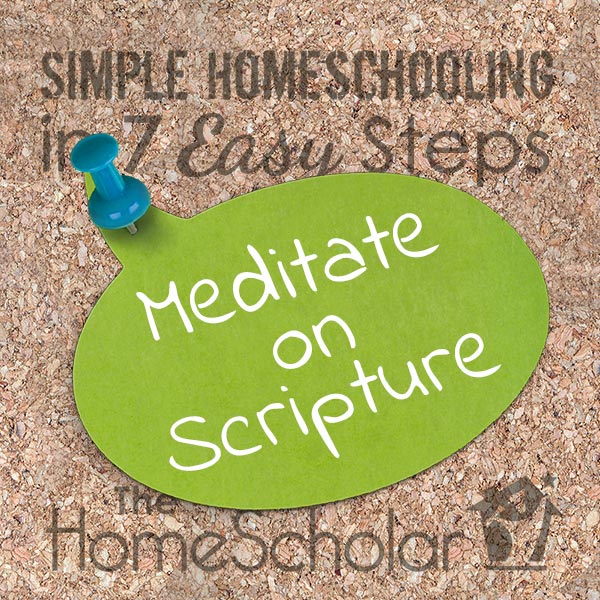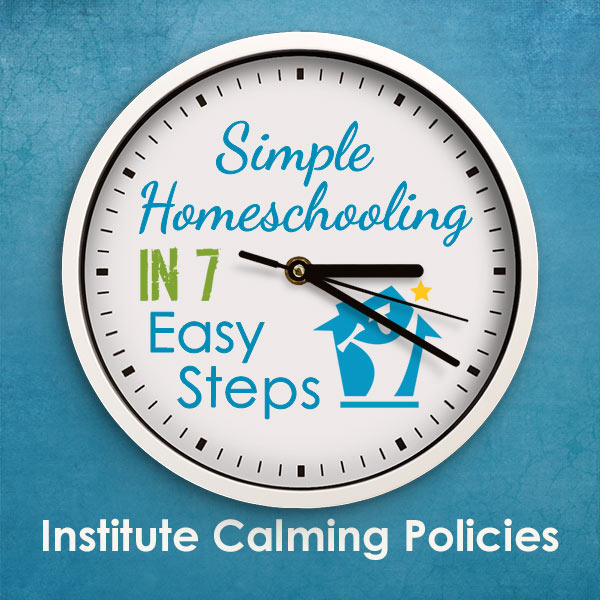Quick Links
Let Me Help You
Create a Simple Homeschool
1. Assess the "Busy Life" Problem
Not everyone is crazy busy. How do you know when it’s happening to you? It’s readily apparent if your standard reply to “How are you?” is “I’m crazy busy!” What does it mean, though?
It means you are working past dark almost every day or traveling to activities almost every evening. It’s when you have no time to cook dinner, pick up the mess, or make sure beds are made. It feels like your heart is racing and you lose track of the important things. It’s when you only see the urgent thing in front of your nose, and the important things are completely squeezed out of the picture.
You and your family may say things such as, "I'm overwhelmed" or "I’m just so tired all the time." Younger ones cry or fight more than usual. Home educators say, "We are behind" and "We can't possibly catch up." The consensus is, "This is way too intense!"
You are crazy busy when you have so many activities your children can’t complete core classes. When you are too busy with other activities to finish English, math, social studies, science, and foreign language, then something is out of balance. This is not simple homeschooling.
2. Recognize Your Simple Homeschooling Goal
As a parent, you don’t want to teach your child to be crazy busy. You want them to grow up and have a balanced life. Once they’re an adult, you want them to be at home with their family for dinner, and to care for their children and their home. You can’t merely hope to have an adult child with a balanced life, you have to model it and teach it.
Your goal of simple homeschooling is to teach your child to have a balanced life. You must teach your child how to say no. They will even have to say “No” to some great opportunities in order to have a peace filled life. You have to teach them not to lose track of the important things. This is a life skill, like learning to drive or do laundry.
3. Scripture Meditation Helps with Simple Homeschooling
4. Ask: "Do We Have a Simple Lifestyle?"
Are there enough hours in the day to get everything done? Do you have a planned down time each day? Do you have some free, unscheduled time? Are you getting the core homeschool classes done? Does the important still outweigh the urgent in your house? These are all signs that you have achieved simple homeschooling and are modeling a balanced life.
Look at each subject area and activity for each person in your home. Add the number of minutes or hours each takes. Estimate the time based on how long each task will take if your child works with reasonable compliance, not how quickly they will get it done when they are 100% attentive, but also not how long it will take if they are totally slacking off and distracted. Estimate time based on bad traffic, trouble getting kids in the car, or difficulty getting them up from a nap.
- Are there enough hours in the day? Like many homeschoolers, you may have 18 hours worth of curriculum, but you will never have enough hours in the day to use it all. Many Americans have the disposable income to provide daily activities for each of their children, but you may not have enough hours in the day to do them calmly.
- Will it cause burnout? If the curriculum is above your child’s ability level, or you are using too much curriculum for their needs, then it can cause serious burnout, and frustrated children can spiral into negative self-talk. Excessive activities cause grouchy family members of every age.
- Is your child responsible? You want them to become an independent adult. Encourage your child to learn independently and eventually have independent activities. Simply remember that independence doesn't happen overnight. It's a process that takes years, with lots of training, modeling, and encouragement. And along with independence, you are working to form family closeness that will last a lifetime.
- Are you expecting too much? Some parents expect their children to do school for more hours than the average adult's work day. When you add after school activities, it leaves no time for relaxation or even catching your breath. That's too much! Scale back and limit your homeschool to a reasonable amount of schoolwork for each subject, with core classes first. Add a reasonable amount of activities that still allow for free time as well.
- Did you overestimate mornings? While we would all like to say we get up at 6:00 am to start our day, people rarely bound out of bed and work non-stop until midnight. If your homeschool plans are dependent on making a night owl into a morning person, it won't work. Don't overestimate what time you and your children become functional each morning, or how late you can stay coherent in the evening. Simple homeschooling means working with your children's preferences rather than against them.
- Can they concentrate that long? The reason schools have 50 minute classes is because studies show this is how long a teenager can concentrate. Studies show that mixing physical activity breaks with seat work increases productivity. Allow a balance between subjects and activities, so your child isn’t asked to do seatwork for more than an hour at a time.
- Could you do it as an adult? This is a great way to assess your child’s workload. If I told you to sit still, without moving, and pay attention to a computer screen or textbook for eight hours straight, and then run to soccer for three hours, could you do it? I don't think so! If you couldn't or shouldn't complete your plan as an adult, don't ask your child to do so, either.
5. Simple Homeschooling Requires Margin
Margin is the empty white space in a book that makes it more readable. Margin is also unplanned white space in life that makes life more livable. Instead of being completely overwhelmed by everything going on in your life right now, plan margin into your day. Set up unplanned free time and you are planning margin into your life.
Sleep is required to help your brain recover after a day of work. In a similar way, unplanned time allows the soul to recover. Children need free time to play and teens need free time to develop their individual interests. Parents need free time for sanity. But to achieve margin, you have to say "no" to many good things in life. Focus on leading a sane life. Sanity comes from margin.
6. Simple Homeschooling Requires Saying, "No"
Homeschoolers are caregivers, trying to teach kindness to their children. It can be difficult to say “no” when caregiving is in your DNA. Put your priorities first: children and family. Teach your children how to say no politely so people listen. This assertiveness is valued in college, careers, and interpersonal relationships.
Not everyone has the "assertiveness gene" but saying “no” can be taught. There are three easy steps to saying no. The key is to express it as a "No Sandwich." Start with the word "no," add an explanation or humor, and then end with the word "no" again. The other person will hear you this way, but without taking offense. Here is the formula for saying no.
Step 1: Say it. Start with a clear, simple, unambiguous declarative statement that nobody could possibly misunderstand. Choose one of these statements: “No. Nope. Absolutely not. I can’t.”
Step 2: Explain it. Add a short explanation. While certainly not required, it can make your “no” more polite or easy to swallow. Choose one of these statements: “I’m honored, but I can’t. I have other priorities right now. Sorry, my schedule is full.”
Step 3: End the conversation and walk away. Sometimes your “no” statement is not clearly heard, so if a polite explanation doesn’t end the conversation, try replying with humor. Choose one of these statements: “Are you serious? My life is crazy enough as it is! My brain is full, and I can’t fit in one more thing.”
Be firm if you aren’t heard. You may need to sound more firm, or even harsh, to protect your precious family time. If there are any lingering doubts or you still feel pressured, give your answer one last time with this statement: “Listen to what I’m saying. The answer is no.” Then quickly turn to leave, or send the email without any further comment.
7. Institute Calming Homeschooling Policies
The key to a healthy family does not require a huge activity list. It requires balance and communication. As you think through the coming year, try to institute calming policies so your time spent together creates happy memories, not screaming matches.
Have a regular family meeting to prioritize a limited number of activities. Choose activities that are meaningful to the participant. Avoid saying “you should” or “we should” outside these meaningful activities. Share regular meals together as a whole family whenever possible. Plan unscheduled hours with free and quiet time.
The Most Balanced Homeschool Life Wins
As an adult, a balanced life includes work, rest, leisure, and family. Teach each portion of a balanced life to your teen. You don’t want them to grow up to become a workaholic, anymore than you want them to become a couch potato. You want your young men and women to recognize the value of a balanced life. Demonstrate balance. Teach them what a quality home life looks like. This means spending enough time at home to show the value of your life at home.

 Login
Login







